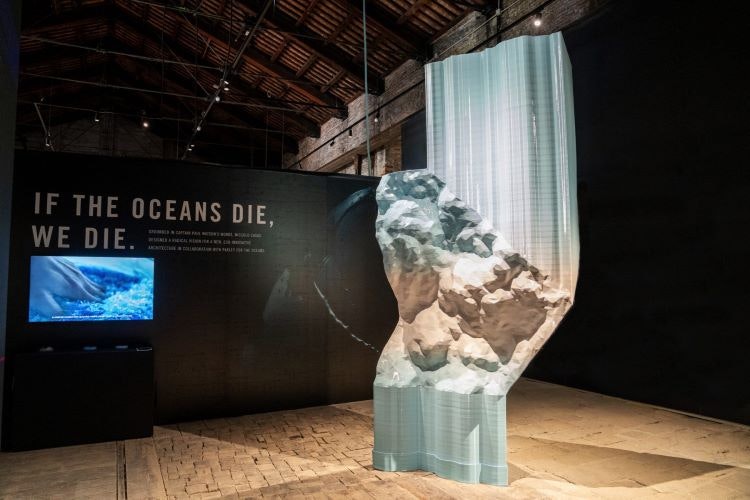V&A has announced its programme for the 20th year of the London Design Festival (LDF), which includes a 3D-printed sculpture made from marine plastic waste and a live glassblowing studio.
For the 13th year running, V&A will act as the official hub for the festival, housing eleven displays and installations created by designers from across the world. Specially commissioned for LDF, each project will interpret the theme of “transformation”.
“The art of repair”

R for Repair: London x Singapore aims to highlight the benefits of repair, inferring that the process cannot only add character but also value to a possession. Led by DesignSingapore Council and National Design Centre (Singapore), the project intends to “illuminate the air of repair” by exhibiting objects that have been “creatively renewed” by designers.
Prior to the exhibition, members of the public from London and Singapore were invited to hand over cherished, broken objects and explain their meaning, which were then passed on to designers for restoration. A wider aim of the exhibition is to encourage global waste reduction by demonstrating that things can be given a longer lifespan with a little creative effort.
All repaired objects will be returned to their owners after the exhibition.

Drawing on similar themes, Italian architect and professor Niccolo Casas will present Plasticity – a 3.6-metre-high sculpture made with Ocean Plastic. The marine plastic waste used in this project was intercepted by the collaboration network Parley for the Oceans.
After being collected from beaches, islands and coastal communities, the plastic was then 3D printed by fabricators Nagami. The project represents the possibilities of “eco-innovative architecture” and also attempts to show how designers and architects can work in harmony with the ecosystem to create a circular economy.
Addressing the Whale in the Room

An animated film by Design Earth seeks to address the reality of life and death in the context of the climate emergency and the sixth mass extinction. Whale in the Room is a “speculative eco-fable” that reimagines the life of Hope, the blue whale skeleton and ceiling centrepiece at the Natural History Museum.
In the tale, Hope will come to life and swim in the Thames in a bid to raise awareness around climate action. Along the way, she will swallow up both the material legacies of whaling including the first oil of the Industrial Revolution and the Great Exhibition of 1851, which demonstrated Great Britain’s industrial prowess.

Also inspired by museum spaces is Xcessive Aesthetics’ project, Not David! The all-female interdisciplinary design firm have taken the view that a limited number of statues are featured in museums and that this precludes the display, replication and influence of other body types.
To address this, the design team use digital tools and software to scan their own bodies which they then manipulate, distort and reinsert into the V&A. This process is meant to show how replicas can be the subject of experimentation and also explore the idea of “taking up space” across different contexts.
The transformative power of glassblowing

Canadian artist Omer Arbel will take over the John Madejski Garden, turning it into an immersive glass-blowing studio for nine days. With Arbel’s iridescent sculpture ,113, taking centre stage, he will demonstrate how common copper and glass antiques can be returned to their raw materials and used to create something new.
During a procession, the sculptures will be carried into the Santa Chiara Chapel in the V&A’s Medieval and Renaissance gallery. The demonstration is an attempt to make people appreciate the beauty of archaeological artifacts.
All of the V&A’s installations are housed at the museum’s Cromwell Road building, and are open during LDF from 17 to 25 September.

- Design disciplines in this article
- Industries in this article
- Brands in this article







